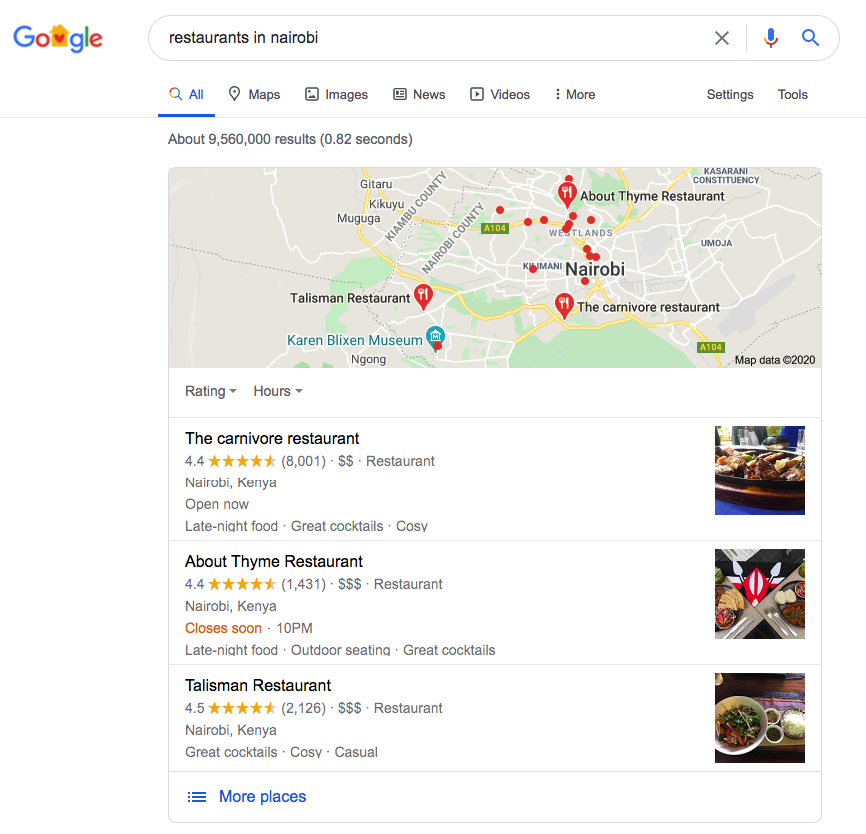In a recent post, we shared an overview of how merchants can – and should – approach their digital marketing tactics to reach more potential customers and grow their businesses.
Digital marketing is a vast and ever-evolving field. With the digital era well and truly leading the way, more and more businesses are moving online to accommodate customer demand. Once you’ve tackled the basics in our previous post, covering fine-tuning your website for customer experience (especially via mobile devices), sharing content, and getting started with PPC, the following tips will help you fine-tune your strategy to really strengthen your presence in your local and global market.
Look to Local
If you have a local offering – a store or service available in your town – it’s important to tailor your digital presence so that local customers can find you in person. That’s where Google My Business and Google Local step in.
Google My Business (GMB) is vital in ensuring that your business is displayed prominently and accurately on Google’s search results, with an accompanying map to help customers find you. When people search for your business, service, or product, on Google, GMB will display your business along with a visual map and provided contact information.
Upon verifying your business, you can easily edit location information, store hours, contact information, and more. GMB also enables businesses to interact with their customers, responding to reviews and posting photos of the shop and/or products and services they provide. Google has reported that businesses with photos get 42% more requests for directions via Google Maps, and 35% more website clicks than those who don’t, so be sure to add some visual content!
GMB also provides insights into how customers reached your business through their search, and where the customers are located. It will also tell you how many customers clicked on the phone number, address, or website from your local listing, giving you the chance to fine-tune your presence in Search and Maps.
Example of a local search result for restaurants in Nairobi
Feedback
Another great way to market yourself, is by allowing your satisfied customers to do it for you. Word-of-mouth is an effective means of passing the message of a business’ capabilities and success, and this holds true both for customers who recommend you to their friends as well as reviews posted online for others to read.
Reviews and feedback paint a firsthand picture of the experience of doing business with you. It also gives you the opportunity to see what “works” for your business when dealing with your customers, and what may need some improvement. Ways of encouraging customers to leave feedback varies a little by industry, but you can start with in-store placards about your online presence, or follow up emails to thank them for their business and link them to places where reviews can be left.
When customers leave reviews, it’s great to respond and show that you’re present and reading them – whether they’re glowing messages of praise, or suggestions on what you could do better. Of course, hopefully all of these posts will be positive – when you have the chance, check in with your customer for direct feedback.
Newsletters
Newsletters are a great way to keep in contact with customers, and potential customers. They support your digital marketing and business efforts in a number of ways:
- Allow you to share announcements and new products with people who have an interest in your offering.
- Target products, services, and messages to specific customer segments.Z
- Serve as an opportunity to drive traffic to your website, by including links to pages or products you would like to increase visibility on.
- Even without a specific announcement (or a customers’ immediate need), sending a well-thought out newsletter with some regularity keeps your name popping up in their inboxes, helping to ensure you’re on their mind when the time comes.
- Provide some insight into the interests of your audience, as many tools for sending bulk mailings come with insights and opportunities to see what people have clicked on, and what they’ve passed by.
Here are a few best practices to get you started in email marketing:
- Set up an automated welcome mail, which sends to a person upon subscribing to your list.
- Be sure your emails have an attention-grabbing subject line, and short-and-sweet (and relevant) preview text to entice your recipient into opening and reading.
- If you have a variety of product or service segments, try to build aligned customer segments in different lists, so you can target your message more sharply.
- Be personal, and personable.
- Find the right timing to send your emails. A good email marketing program will show you when recipients most often open your messages, which will allow you to fine tune days and times.
- Take advantage of insights and reports to continue to tune your messaging and images and appeal to your audience.
Should you start building a database and sending emails, ensure you comply with GDPR requirements, particularly around allowing your customers an easy way to opt-out or unsubscribe.

